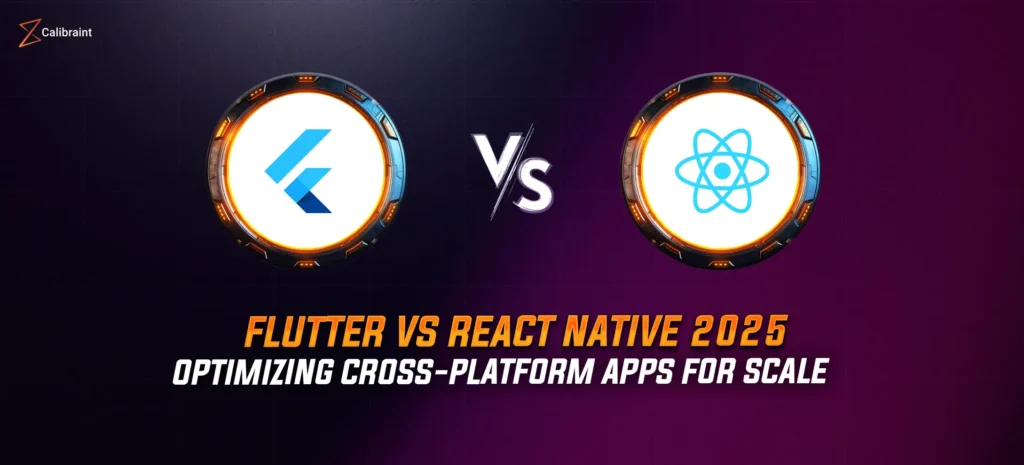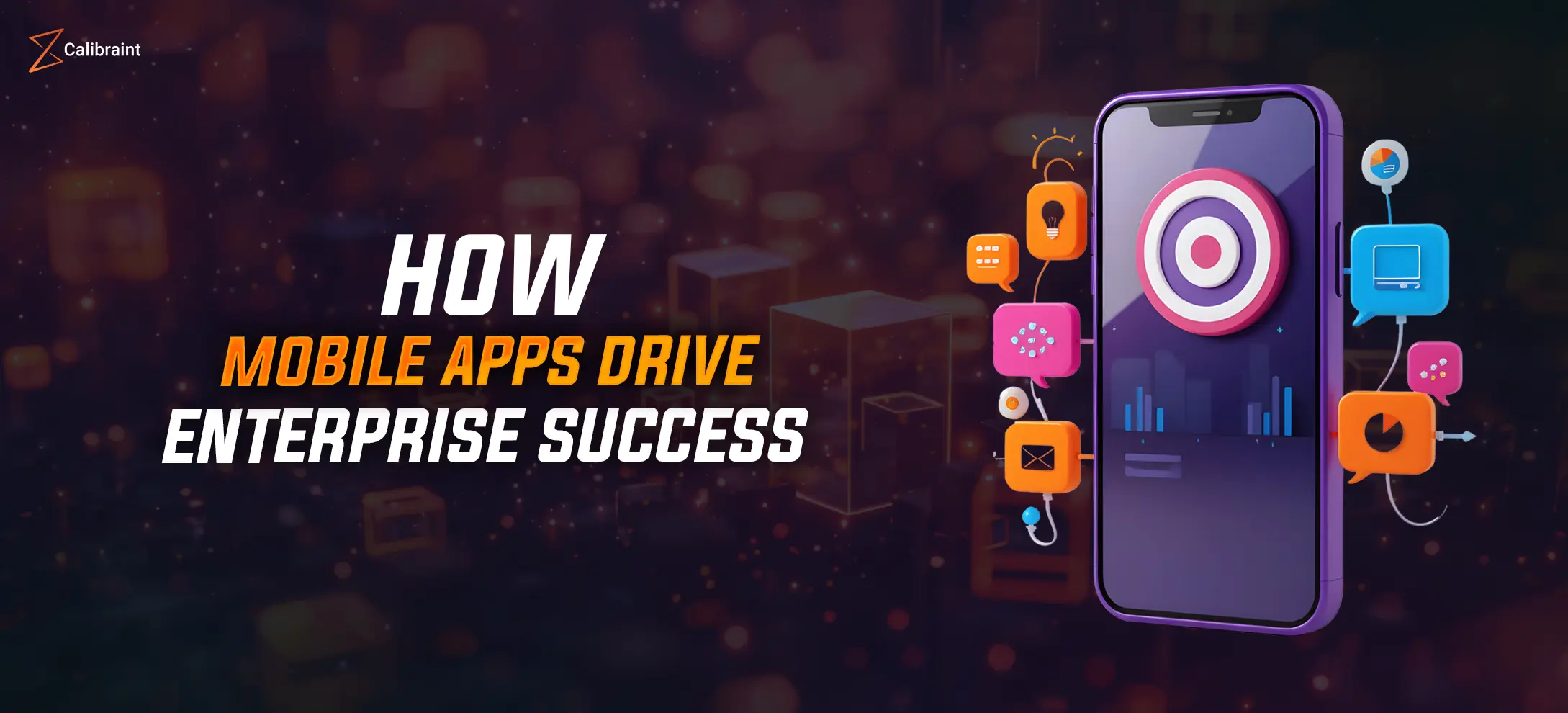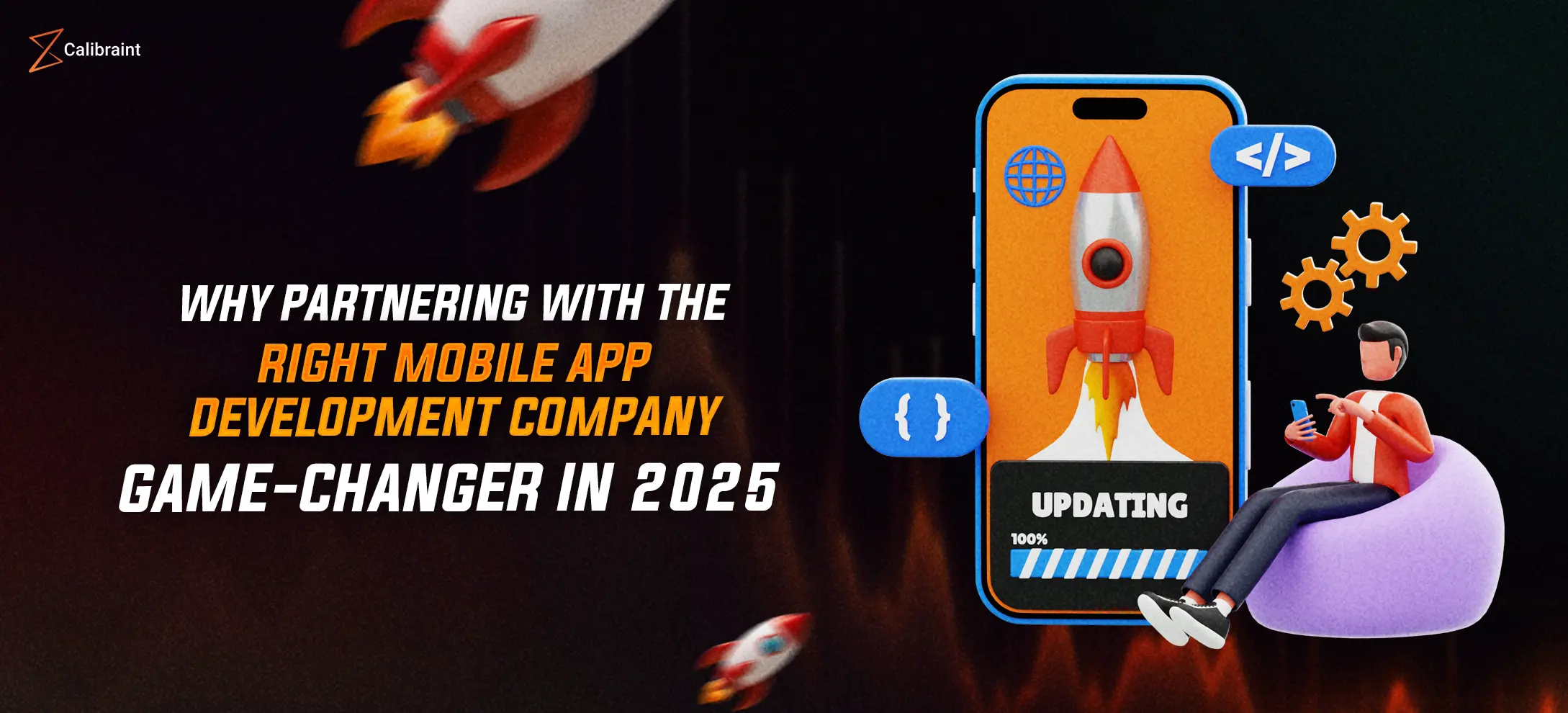Optimizing Flutter and React Native for Scalable Cross-Platform Apps in 2025

Your VP of Engineering presents two roadmaps with the same features and team size but different frameworks. One promises faster time to market with a single codebase using Flutter React Native, while the other focuses on native performance but needs three iOS hires at $180K each. However, neither of them addresses the true issue: how your app will manage reaching ten million users or changing course when market demands suddenly change.
This goes beyond cross-platform app frameworks; it also concerns whether your mobile architecture serves as a catalyst for innovation or as a hindrance to growth. The smartest teams today invest in scalable cross-platform development, building low-code cross-platform apps and hybrid cross-platform solutions that flex as fast as their business strategy evolves.
What Your Technical Team Isn’t Quantifying
Cross-platform frameworks promise efficiency: write once, deploy everywhere. In practice, that efficiency sits somewhere between “mostly true” and “technically accurate but financially misleading.”
Flutter and React Native both deliver on the core promise: you can ship to iOS and Android from a single codebase. The real difference shows up in three areas that directly shape your P&L.
1. Development velocity after month six.
Both frameworks help you move fast in the early stages. As complexity grows, they behave differently. Flutter’s architecture shields you from platform-specific issues until you add custom native features. React Native feels familiar if your team knows JavaScript, but it exposes platform quirks sooner. At six months, both look even. At eighteen months, React Native often demands around 25–35% more engineering hours due to dependency updates and platform fragmentation.
2. The talent equation your recruiters understand.
React Native developers often come from your existing web team. Flutter developers are usually specialists. Across U.S. and European markets, Flutter salaries tend to be 10–15% higher on average, according to 2024 developer salary analyses by Enablis and Stfalcon. In regions with fewer Flutter experts, hiring can take longer, sometimes several months. The choice of framework quietly doubles as a workforce strategy.
3. Platform API lag as a strategic risk.
When Apple unveils a new feature at WWDC, Flutter typically supports it within weeks through its rendering engine. React Native often waits for community-built bridges or custom native modules. If your roadmap depends on early access to new platform capabilities like health APIs, AI integrations, or spatial computing, that lag becomes more than a technical issue.
Performance: Where Perception Becomes Conversion Rate
Users don’t benchmark your app. They compare it to the best-performing apps on their phone, the ones that feel instant and fluid after years of native optimization.
Flutter React Native marks a turning point for cross-platform app frameworks. Flutter renders every pixel on its own. It doesn’t rely on iOS or Android to draw buttons or lists; instead, it uses Skia, the same graphics engine behind Chrome. This design choice gives two distinct business advantages.
First, consistent performance.
Flutter apps deliver smooth animations at 60 fps, which is critical for consumer experiences where delight drives retention. The difference between 60 fps and 45 fps is a psychological friction that makes users prefer apps that just feel better.
Second, creative flexibility.
Your designers get full control over UI. What takes weeks in native development can happen in days. For brands where visual identity defines market position, whether it’s a fintech app signaling trust or a lifestyle app selling aspiration, Flutter’s rendering freedom turns hybrid cross platform solutions into vehicles for brand expression without premium native costs.
React Native, powered by its fully mature new architecture in 2025, closes much of the performance gap. The removal of the old JavaScript bridge allows near-native speed for most use cases, though complex animations or real-time features can still reveal minor slowdowns.
From a business view, React Native fits best for scalable cross platform development of content-driven apps and standard interface patterns. Flutter dominates when the interface is the product.
The Talent Math Nobody Runs
Your hiring strategy determines your framework choice more than any technical specification ever will.
- React Native: Flexibility Through Familiarity
React Native’s JavaScript foundation allows your frontend team to ship mobile code from week one. No new language, familiar workflows, and shared libraries make onboarding seamless. For companies where speed defines survival, such as pre-Series A startups or enterprises launching defensive products, this talent flexibility becomes a real competitive edge.
Retention matters too. Developers seek React Native experience because it builds on their JavaScript expertise. Job postings attract more applicants, and engineers feel their skills remain transferable beyond mobile roles.
- Flutter: Specialization That Builds Stability
Flutter developers, on the other hand, choose specialization. They invest in Dart, a language primarily used within Flutter. This creates mild hiring friction but stronger retention. Flutter engineers rarely switch jobs for small raises because they’ve committed to a framework, not just a paycheck.
The decision often comes down to priorities: breadth and flexibility with React Native, or depth and commitment with Flutter. Neither approach wins universally. Your hiring philosophy should guide the choice as much as your product roadmap.
- Distributed Teams and Scalable Development
Offshore and distributed models introduce another factor. React Native contractors are widely available, but quality varies. Flutter contractors are fewer, yet that scarcity often filters for developers who specialize deliberately.
Scalable cross platform development and hybrid cross platform solutions depend on which global talent pool offers dependable expertise within your budget. The right balance of accessibility and specialization defines how well your team can grow while maintaining consistent product quality.
Dependencies: Betting on Strangers
Third-party packages are technical debt dressed as shortcuts. Both ecosystems offer thousands. Your risk isn’t quantity; it’s maintenance trajectory.
The React Native ecosystem is vibrant yet unpredictable. Packages range from those maintained by Meta engineers to those by solo developers. Popular ones evolve rapidly; niche ones often fade away. Your app’s stability can depend on contributors who owe you nothing and follow their own timelines.
Flutter’s ecosystem, though younger, reflects Google’s structure. Core packages receive consistent maintenance, while the smaller community stays focused. When you need an uncommon integration, you often write native code yourself instead of relying on outdated packages.
In short, React Native gives you more ready-made tools but introduces a higher dependency risk. Flutter demands more custom work but grants greater control over your stack.
For enterprise applications where stability is non-negotiable, that risk profile matters. Fast-moving consumer apps can survive the occasional breaking change.
When Scale Changes Everything
Cross platform frameworks buy speed at launch, but scale introduces pressure.
Instagram gradually transitioned from React Native to native implementations, not because React Native failed, but because at 500 million users, platform-specific optimization delivered measurable business value. Every millisecond at that scale affects engagement metrics and ultimately drives valuation growth.
Your inflection point arrives earlier, though the logic is the same. When your app experience demands optimizations beyond what the framework handles, you begin weighing migration costs against temporary workarounds.
Flutter’s rendering independence postpones this moment. It lets teams optimize visual performance longer without native code. But when deep integrations like background processing, battery optimization, or AR become essential, both frameworks reach abstraction limits.
The smart strategy is simple: ship fast with the framework that fits your timeline, but design the architecture with migration in mind. Companies succeeding with hybrid cross platform solutions or scalable mobile development treat these frameworks as strategic stages in growth, not final destinations.
The Real Decision
Stop asking “which is better?” Ask “which risk matches our constraints?”
Pick Flutter when: Your differentiation is interface polish. Consumer apps where design is brand. Products targeting emerging markets with device fragmentation. Teams are investing in specialized talent for long-term control.
Pick React Native when: Speed is existential and you have strong web talent. Your product is content-driven, not interaction-driven. You’re building internal tools or MVPs where technical debt trades for validation speed.
Pick neither when: Platform features are your core value. You’re building for Apple Watch or spatial computing. Your advantage requires maximum hardware performance. You can maintain separate native teams.
What Actually Changed in 2025
- On-device AI is table stakes now. Both support TensorFlow Lite and Core ML, but maturity varies. Flutter’s plugin architecture makes ML inference cleaner. React Native’s speed improved, but needs more native setup. For AI roadmap priorities, test your specific case early; benchmarks hide critical details.
- Wearable and foldable support moved from experimental to production. Flutter handles adaptive layouts more elegantly. React Native achieves similar results but needs more manual work. If wearables are in your strategy or you’re targeting foldable markets, Flutter’s flexibility carries weight.
- AI coding tools favor React Native’s JavaScript over Flutter’s Dart; current models are trained on vastly more JavaScript. For lean teams using AI pair programming, this compounds productivity advantages.
- Privacy architecture isn’t optional. Both handle requirements, but differently. Flutter gives more control over data flow between native and framework layers. React Native simplifies compliance with less granular control. For regulated industries, audit both before committing.
What Actually Matters
Which framework helps you fail fast or scale smart?
If you’re validating fit, the framework that ships fastest wins. Technical debt becomes a luxury only after you find users who care. When you’re scaling a proven product, the framework that sustains quality as complexity grows wins.
Companies succeeding in mobile aren’t religious about technology. They match technical decisions to business stage, talent availability, and priorities. Flutter and React Native both work for most cases. Your specific constraints, like team composition, user expectations, competitive timeline, and budget, make one superior for your situation.
The worst decision isn’t picking the “wrong” framework. It’s picking for the wrong reasons, because it’s newer, competitors use it, or developers prefer it without a business context.
Ask your team to quantify the decision in business outcomes: time to first revenue release, cost to maintain quality through 10x growth, ability to attract developers you need, and flexibility to pivot when the market demands it.
Strategic cross-platform app development is not about chasing frameworks. It is about designing flexibility into your mobile architecture from the start.
This is where Calibraint helps enterprises align technology choices with real business outcomes, ensuring that speed today does not compromise scalability tomorrow.



























